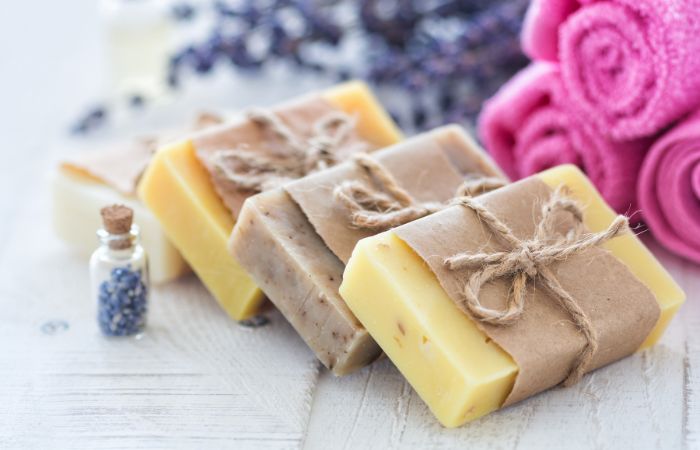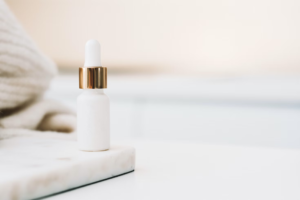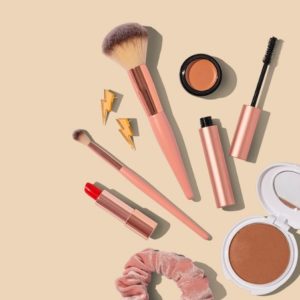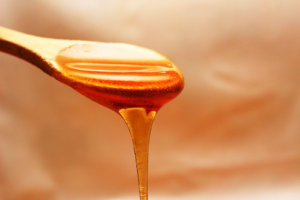
Most people use soap on a daily basis. After all, who doesn’t want to be clean and smell nice all the time? Unfortunately, there are ingredients in modern soap that can cause harm to your skin or health.
Below we’ll discuss some of the more common ones that arouse concern.
Common Harmful Chemicals Found In Soap
Sodium Lauryl Sulfate (SLS)
The surfactant known as SLS may be found in a wide variety of soaps as well as other cleaning supplies intended for the body and other home cleaning products.
SLS has been associated with skin irritations. It may also cause allergic responses like eczematous dermatitis. It forms bonds with the other typical components of soap, resulting in the formation of carcinogenic nitrosamines.
SLS is included in most over-the-counter brands of toothpaste. It’s also common in a wide variety of other personal care and cosmetic items. Thus, if avoiding the potentially dangerous compounds in soap is your primary goal, SLS is probably the first ingredient you should check.
1,4 Dioxane
This another common chemical that may be found in a variety of cosmetics and other items that are meant for personal care.
This substance has been identified both as a possible carcinogen to animals and humans. According to research, it is able to quickly permeate the skin. Furthermore, there is a link that prolonged exposure may result in organ toxicity.
To make matters worst, this widespread soap chemical is not listed on any of the product labels. This is due to the fact that the FDA doesn’t always require that 1,4-dioxane be included on product labels. This is because the said chemical is a byproduct and created during the production process instead of being an ingredient to make the product.
1,4-dioxane can occur when chemicals such as oleth, ceteareth, xynol, PEG compounds, and SLS are combined with other chemicals. Hence, if you want to avoid 1,4-dioxane, your best bet is to avoid soaps having any of those mentioned chemicals.
Parabens
The presence of the preservatives known as parabens in soap allows the product to have a longer shelf life. It’s also commonly found in shampoo, cosmetics, and a wide variety of processed foods and medications.
The most common form of parabens is methylparaben, butylparaben and propylparaben. But generally, any chemical with the attached term “paraben” should cause concern.
According to some studies, parabens may negatively impact human hormones. It may have a detrimental effect on both reproductive organs, fertility, and birth outcomes. It also increases the chance of acquiring a variety of specific cancers.
Even if you manage to escape those horrifying worst-case situations, parabens are still a common skin irritant.
Triclosan
This ingredient is a pesticide with antifungal and antibacterial properties. The Skin Deep Cosmetics Database assigns it a risk rating of 7. Even at low quantities, it has been connected with changes in the concentrations of thyroid hormones as well as disruptions in the endocrine system. In addition to that, it is an irritant to the lungs, skin, and eyes.
Best Soap Alternatives
If the sound of the harsh chemicals mentioned above is distasteful for you, then worry not. There are already a lot of soap alternatives that you can use.
Soapberries
Saponin is a naturally occurring and low-sudsing detergent that is present in soapberries. Those who like natural products over those that include harsh chemicals may find this to be an excellent alternative soap. Also, it’s an excellent choice for people with sensitive skin.
Glycerine Soap
It is possible to create a glycerine soap using ingredients that are entirely natural. Hence, it’s another alternative for anybody who wants to steer clear of the chemicals in soap. Glycerin soap also works well for people with mildly sensitive skin.
Wheat Soap
The coarseness of wheat is good enough for soaping purposes. Furthermore, it contains selenium that offers deep nourishment.
Natural Soap Companies
Modern soap is typically manufactured in mass quantities and then distributed all over the place. As a result, there are ingredients in there that are added to prolong the shelf life and help it withstand the rigors of transportation without losing quality.
It is worth noting that natural soap companies are on the rise offering cleansing products without any of the chemicals and preservatives that we’ve discussed above.
This can be more convenient and preferable than bathing with soapberries for example, although the price can sometimes be a bit higher.
Wrapping Up
Even academia is starting to research more, publishing studies like this that clearly show the harmful effects of commercial soap products.
We hope you’ve enjoyed learning about the chemicals and ingredients that can be hidden within the everyday soaps we use to wash our hands and bodies.
Stick to these guidelines to be free from their harmful side effects and start living a healthier lifestyle.





